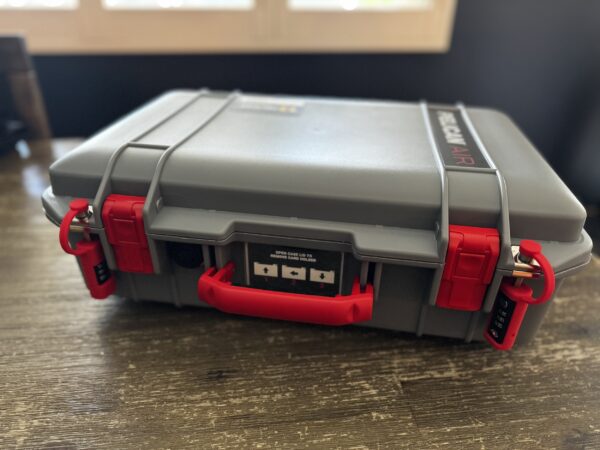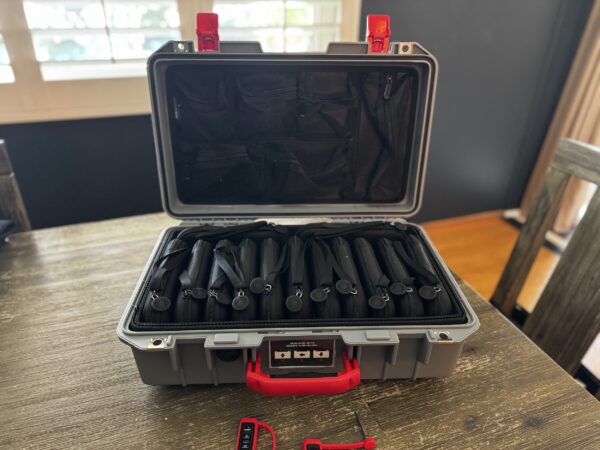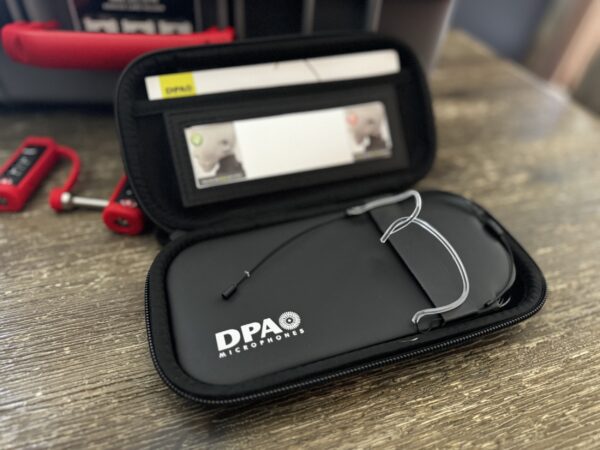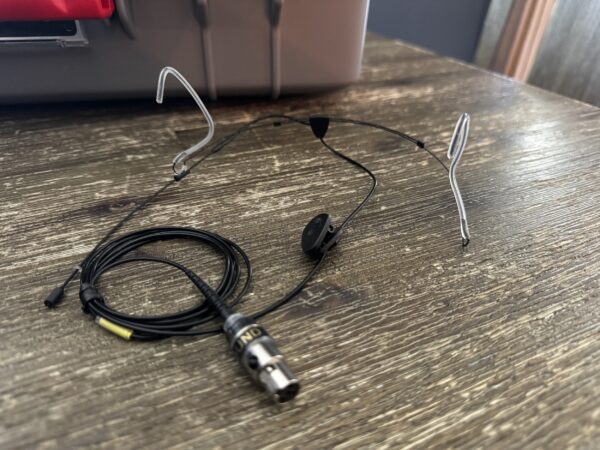purchase of DPA 6066 microphones
Im happy to say that I just received an initial shipment of 18x black, DPA 6066 TA4 subminiature headset microphones – to be made immediately available for rent.





Corporate style events are my bread and butter. All too often it’s a deal breaker for execs to wear a headset mic with a large, ‘bulbous’ windscreen. You show them the mic, and are met with a grumble – “I’m not going to wear that madonna mic, I want a lav.”
As sound engineers, headset microphones just make our lives easier. More times than not, even a mediocre headset is going to sound better than the “best” lav. It’s just physics really – they have the best proximity to the source, and the most consistent placement from person to person.
Enter the DPA 6066 – With its ultra-low profile, comfort, and superior sonic quality – it’s a game changer. I just demo’d it for the first time on an exec last week for a segment that went live to CNBC. Not only was it met with immediate positivity, but it sounded amazing to boot. “It looks great!” – were the words used. In my opinion, as long as you are in non-windy conditions (basically any indoor venue or ballroom), you can go without the windscreen on this mic. The capsule (3mm) is at most, 2x the diameter of a pencil lead. It honestly takes some serious squinting to see this mic on imag, or in a multi-view.
Omni vs. Directional – Now, if you are like me, by either copy/paste syndrome…. or availability – 9 times out of 10 either the DPA 4288, or 4088 is on the gear list if the show is scheduled for headsets. I mean I get it. We work with large PAs on big stages. Makes sense to use a directional mic for off axis rejection right? If you can squeeze another 3db of gain before feedback under harsh environments, then why not go directional?
But are the conditions in the Marriott grand ballroom at 66 deg Fahrenheit really that harsh? Is that million dollar L’Acoustics or D&B PA throwing that much rear loading back onto the stage?
Listen, there’s obviously a reason directional headsets exist, or they wouldn’t be everywhere. But have you ever had an A2 that couldn’t get the mic capsule placed in the dime-sized target zone on the presenter? Have you ever had the boom/capsule roll between the time the a2 mic’d up the talent and the time they made it on stage? I like directional headset’s, but there’s too many ways to screw them up.
If you place an omni DPA headset mic even two full finger widths behind the crack of the smile – you are not going to lose even close to the gain as you would from a directional. Again, just from the sheer physics of a headset mic capsule being so close to the source is going to net you all the GBF you need. I don’t know about you, but when the PA is tuned right, my headset group eq might have 1-2 notch filters and a very light -6db per octave low pass to take the sizzle off.
Black vs. Beige & Cocoa – DPA (& other headset manufacturers) have done an amazing job marketing the need for color-matching a mic to your presenters skin tone. They’ve conditioned producers that they need to have three mics on show site for every channel of RF! Three! What. A. Racket. Im telling you right now, that time is over. Every engineer I talk to is over it. Without a doubt, at some point during the show you will run out of one of the colors, and end up with the wrong color on a presenter. Solution = black mics for everyone. Everyone can see a beige headset on white skin, a cocoa on brown, and a black on black. The mics are not magically disappearing or fooling anyone. By placing a black microphone on everyone, you are removing yourself from the color wars. The audience expects to see a microphone on someone presenting! There’s no need to try to poorly hide it – embrace it!
Termination – Im a corporate style sound engineer, and as such I live in a Shure Axient Digital world 90% of the time. So why are we using DPA headsets with microdot adapters? If you are buying microdot inventory for your shop because you want to be able to use them with Sennheiser or other manufacturers on that <10% occasion, you are shooting yourself in the foot. Ever had a headset crackle on stage when it seemed ok during soundcheck only to find out the microdot adapter is failing? Ta4 termination all the way.
Thanks for listening to this engineers rant. At the end of the day, I just want to use gear that provides the best, consistent results. If you have a project coming up and think these mics might be for you, reach out to me and I’ll sort you out – frost@fsound.net .
As described from the manufacturers website – “The capsule of the 6066 CORE Subminiature Headset is just 3 mm (0.12 in) in diameter, but packs the audio power of larger, award-winning DPA mics. Despite its small size, it is abundant in clarity, consistency and durability – three qualities that truly matter.
Beyond this minimized size and maximized sound potential, these mics also sport a completely redesigned, lightweight, one-size-fits-all headset that attaches over the ears for maximum comfort. 3-point ear grips with spring mechanisms help grip below the ears and to the side of the head for added security. A 2-way adjustable boom system (length and height) with an anti-rotate mechanism makes this new headset very easy to fit. A new 90° cable management system safeguards the cable and directs it down the wearer’s back, where it can’t be seen.
Between the sound quality and the comfort, once you try it we’re sure you’ll never want to wear another headset mic solution.”
